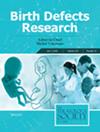Temporal Trends of Infant Mortality Secondary to Congenital Heart Disease: National CDC Cohort Analysis (1999–2020)
Abstract
Background
Infant mortality continues to be a significant problem for patients with congenital heart disease (CHD). Limited data exist on the recent trends of mortality in infants with CHD.
Methods
The CDC WONDER (Centers for Disease Control and Prevention Wide-Ranging Online Data for Epidemiologic Research) was queried to identify deaths occurring within the United States with CHD listed as one of the causes of death between 1999 and 2020. Subsequently, trends were calculated using the Joinpoint regression program (version 4.9.1.0; National Cancer Institute).
Results
A total of 47,015 deaths occurred in infants due to CHD at the national level from the year 1999 to 2020. The overall proportional infant mortality (compared to all deaths) declined (47.3% to 37.1%, average annual percent change [AAPC]: −1.1 [95% CI −1.6 to −0.6, p < 0.001]). There was a significant decline in proportional mortality in both Black (45.3% to 34.3%, AAPC: −0.5 [−0.8 to −0.2, p = 0.002]) and White patients (55.6% to 48.6%, AAPC: −1.2 [−1.7 to −0.7, p = 0.001]), with a steeper decline among White than Black patients. A statistically significant decline in the proportional infant mortality in both non-Hispanic (43.3% to 33.0%, AAPC: −1.3% [95% CI −1.9 to −0.7, p < 0.001]) and Hispanic (67.6% to 57.7%, AAPC: −0.7 [95% CI −0.9 to −0.4, p < 0.001]) patients was observed, with a steeper decline among non-Hispanic infant population. The proportional infant mortality decreased in males (47.5% to 53.1%, AAPC: −1.4% [−1.9 to −0.9, p < 0.001]) and females (47.1% to 39.6%, AAPC: −0.9 [−1.9 to 0.0, p = 0.05]). A steady decline in for both females and males was noted.
Conclusion
Our study showed a significant decrease in CHD-related mortality rate in infants and age-adjusted mortality rate (AAMR) between 1999 and 2020. However, sex-based, racial/ethnic disparities were noted, with female, Black, and Hispanic patients showing a lesser decline than male, White, and non-Hispanic patients.

 求助内容:
求助内容: 应助结果提醒方式:
应助结果提醒方式:


